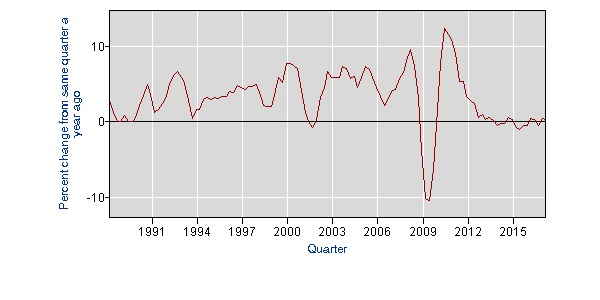May 10, 2017
We hear endless stories in the media about how the robots are taking all the jobs. There was a new rush of such stories after the release of a study by Daron Acemoglu and Pascual Restrepo, which found that robots were responsible for a substantial share of the job loss in manufacturing in the last decade. (For example, this Bloomberg piece by Mira Rojanasakul and Peter Coy.)
However, there remains a very basic problem in the robot story, it is not showing up in the productivity data. To step back a minute, robots are supposed to replace human labor. This means that for the same number of hours of human work, we should see much higher output of goods and services, since the robots are now adding to total output. This is what productivity growth means.
So if robots are having a large impact on jobs, then we should see productivity growth going through the roof. Instead, it is falling through the floor. It has averaged less than 1.0 percent annually in the last decade. This compares to an average growth rate of 3.0 percent in the decade from 1995 to 2005 and also in the long Golden Age from 1947 to 1973.
Strikingly, productivity growth has been especially bad in manufacturing, the place where we see the greatest use of robots. Here’s the picture since 1988, the period for which the Bureau of Labor Statistics (BLS) has a consistent series.

Source: Bureau of Labor Statistics.
Over the last four years productivity growth in manufacturing averaged less than 0.2 percent annually. This compares to rates that often exceeded 4.0 percent in prior decades. This slowdown is especially striking since the rate of installation has increased sharply in recent years. According to data cited in the Bloomberg piece, we’ve added an average of 22,000 robots a year in the last three years. This compares to a peak of around 16,000 in the years before the Great Recession.
If robots are leading to massive job loss, then we should be seeing some serious gains in productivity. Instead the opposite has occurred. It’s awful to let a good story be ruined by evidence, but it just doesn’t seem that the use of robots will go far towards explaining the weakness of wage and job growth in the recovery.







Comments